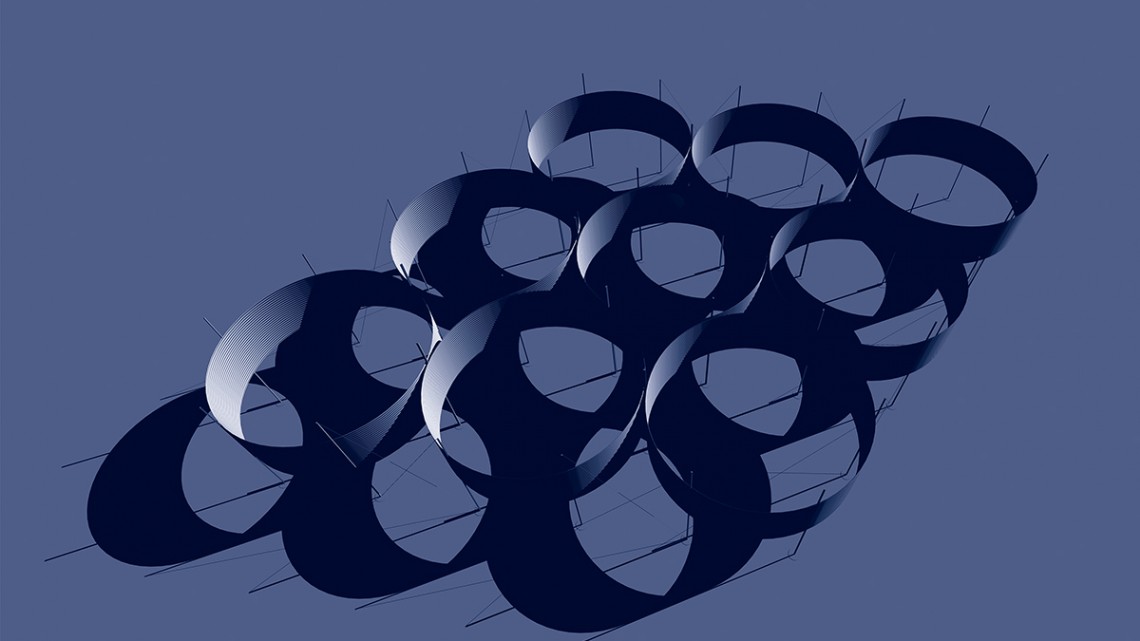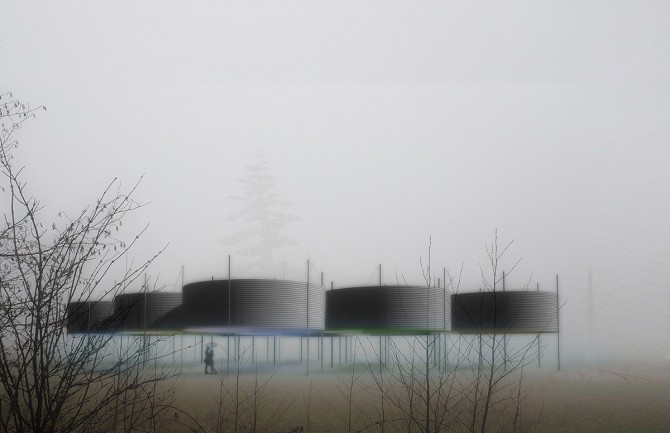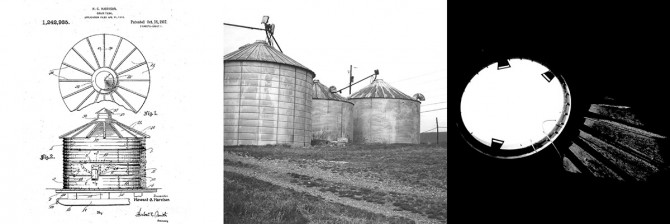
An aerial view of the proposed layout of the nine “oculi” forming a pavilion on Governors Island.
Faculty team wins NYC sustainable design competition
By Becca Bowes
A collaborative exhibition project created by four faculty members will be installed on Governors Island in New York City this summer after winning the 2018 City of Dreams design competition.
“Oculi,” a pavilion crafted from reused grain silos, was created by assistant professor of architecture Aleksandr Mergold, B.Arch. ’00, and his design practice with Jason Austin, B.Arch. ’00, Austin+Mergold (A+M); along with associate professor of art Maria Park, civil and environmental engineering professor Chris Earls and Scott Hughes, principal at Silman Structural Engineers and a visiting lecturer at AAP NYC.
City of Dreams focuses on the future of a world facing depleted economic and natural resources, and promotes architecture and design with sustainability in mind. The competition requires entrants to consider the environmental impact of a design from construction to demolition.
Named for the shape of its dominant material, “Oculi” will repurpose several circular metal grain bins, remnants of the American agro-industrial age. The bins will be procured from upstate New York and central Pennsylvania and brought to the city, establishing a visual connection between urban and rural modes of living. A field of elevated “oculi” will frame unobstructed views of the sky and track the path of the sun.
The finished pavilion will be a place for people to meet, learn about arts programs on the island, and experience how art interacts with its historical context.
Mergold said the project was ideal for A+M, a landscape and design practice that makes an effort to work with existing materials, products, techniques and knowledge from the 20th-century heyday of American manufacturing; and stresses using what is widely available but often in disuse, rather than new, virgin materials and resources.
“We had been thinking about these grain bins for some time now,” he said. “It is probably one of the only successful American building systems designed for disassembly, first patented at the turn of the 20th century and now very much underutilized. Some time ago we designed a housing unit (House-in-a-Can) that would use a standard grain bin – an homage to the work of R. Buckminster Fuller and his early versions of the Dymaxion house.” The “Oculi” project also will inform the continuing work on the housing unit, he said.
Hughes was enlisted for his practical experience. “I reached out to him, knowing that this could be an interesting and highly unusual project from the standpoint of construction and implementation,” Mergold said. They have previously teamed on projects for the 2016 Cornell Council for the Arts Biennial.
Since “Oculi” would be highly experimental as a structure, Mergold sought a collaborator in the College of Engineering. A friend in the college recommended Earls, who was enthusiastic; he said his work will focus on “suitable forms that at once respect the architectural intent and function favorably at the site of installation on Governors Island.”
The project was also an ideal fit for Park, whose art practice includes serial paintings and site-specific installations. She recently completed “Sight Plan,” a 150-foot mural in San Francisco created for the construction fence at the new Chinatown Central Subway Station.
“I had seen some of her work and knew she did murals,” Mergold said. “And there I was with nine ‘rooms’ on my hands, and I knew that I couldn’t just paint them different colors. I needed an idea, and I needed an artist.”
Park proposed covering the inside of the silos with subtle variations of the daytime sky color, so that visitors might move from one to the next in anticipation of finding themselves under one that matched a particular day or time. “As the de/reconstructed grain bins mark awareness of a different time and place, the viewer’s involvement with [the bins] also indicates a different kind of purpose or sense in movement,” Park said.
Following the deinstallation of “Oculi” in late 2018, A+M is looking to partner with a housing organization to reconstruct the bins as an experimental housing cluster in central New York.
The City of Dreams competition is hosted by FIGMENT, the Emerging New York Architects Committee of the American Institute of Architects New York Chapter, and the Structural Engineers Association of New York.
Rebecca Bowes is assistant director of communications at the College of Architecture, Art and Planning.
Media Contact
Get Cornell news delivered right to your inbox.
Subscribe


